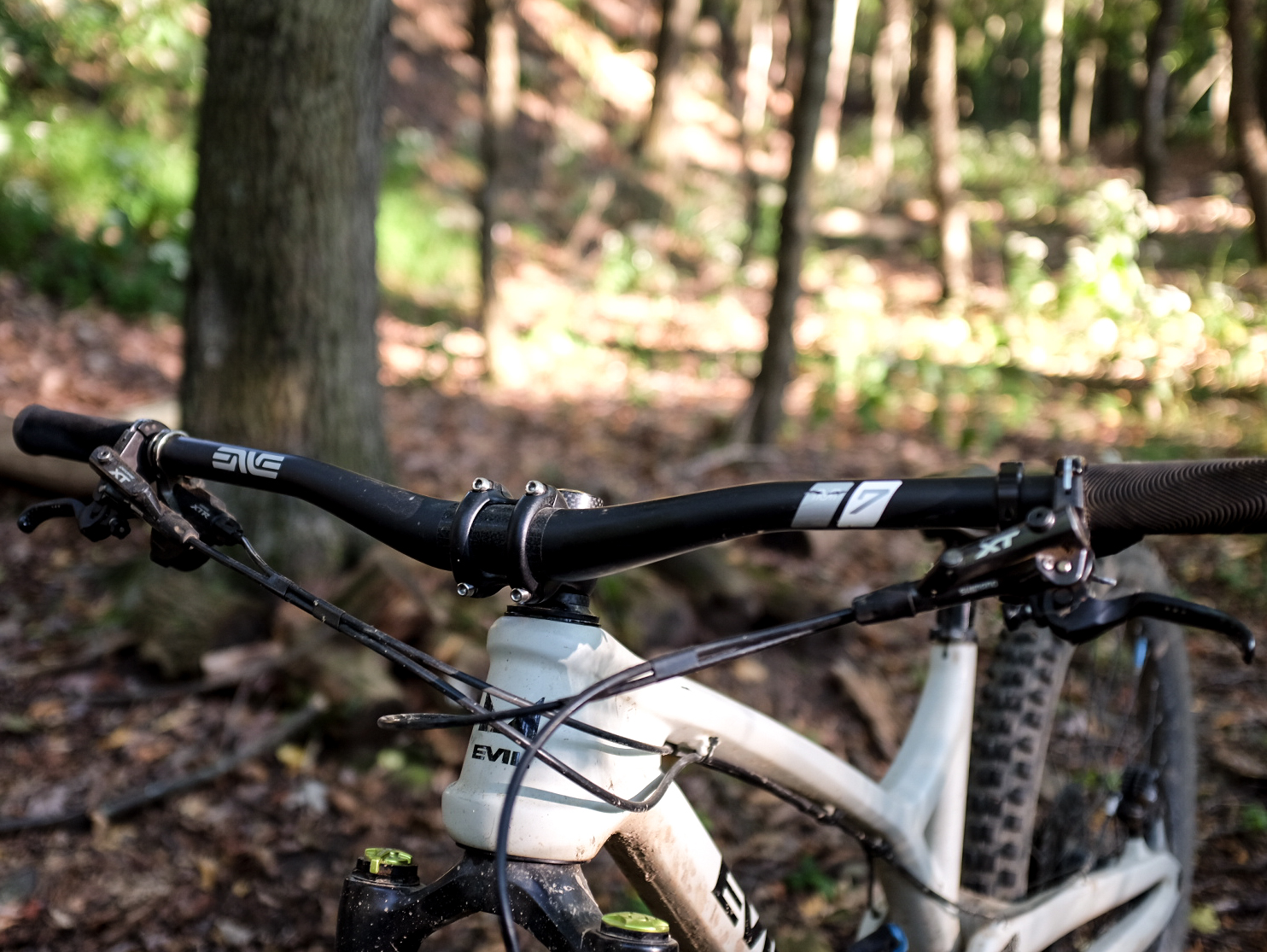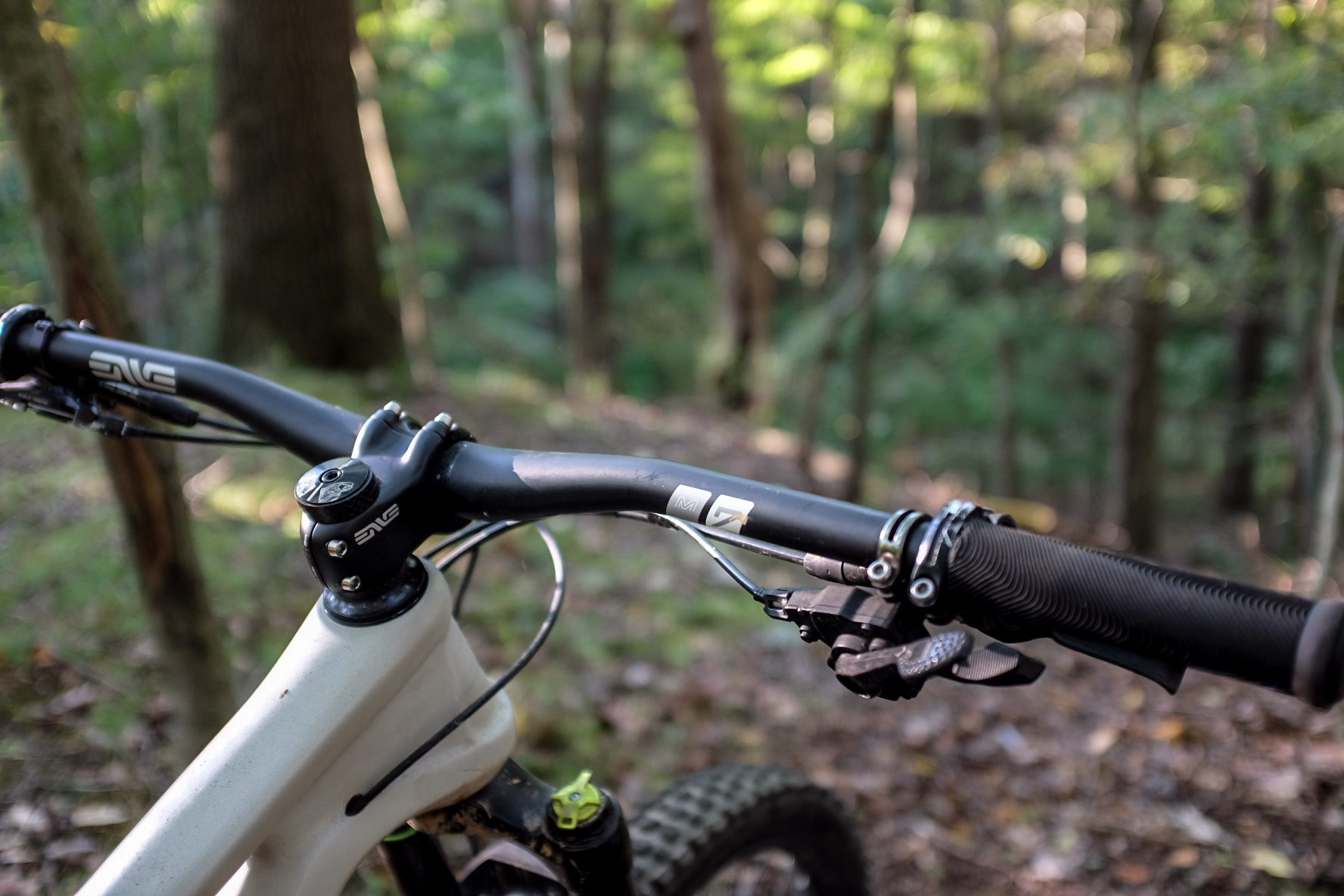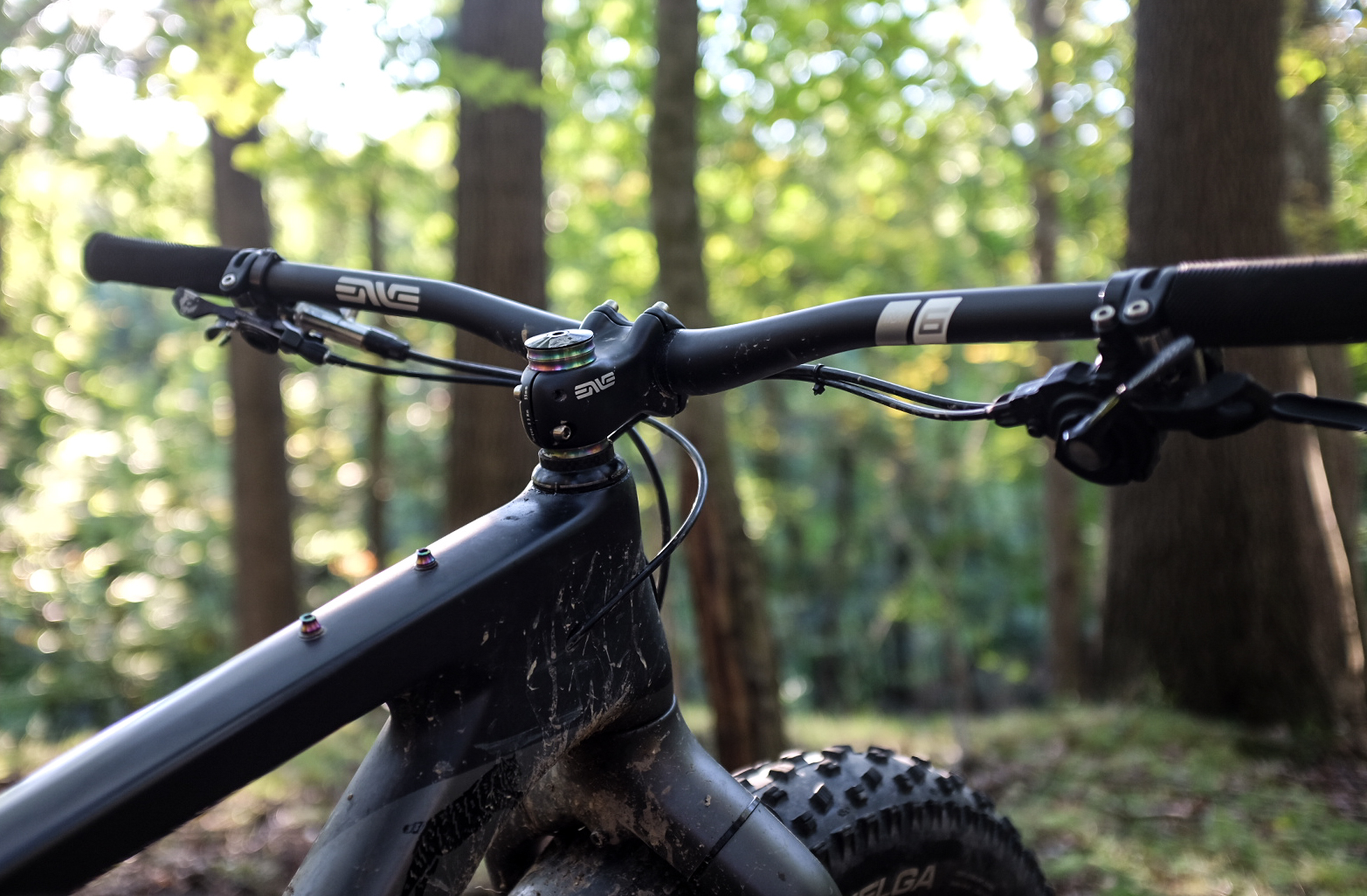ENVE M6 vs M7 Carbon Bar and Stem: Which is the right one for you?
Originally posted on September 18, 2019 at 8:19 amName: William Kirk
Age: 36
Height: 5’10
Weight: 190lbs
Weights (In Grams)
M6 Stem: 85 grams (40mm)
M6 Bar: 190 grams
M7 Stem: 35 grams (35mm)
M7 Bar: 230 grams
Price
M6 Stem: $280
M6 Bar: $160
M7 Stem: $280
M7 Bar: $170
www.enve.com
Standards are a constantly moving target in the cycling world, and it seems every year many manufacturers are singing the praises of the endless engineering benefits to increasing your beloved parts by a few millimeters rendering anything which attaches to it useless. Over time, handlebars have not been immune to this trend. Many of you will remember 25.4mm diameter bars, then 31.8mm came along and were primarily met with wide acceptance until 35mm showed up and confused everyone. To the best of my knowledge, the first 35mm bars appeared in the market around 2012 promising lighter weight and much stiffer ride quality. Here at Dirt Rag, we thought it would be a good idea to run both diameters head to head to decide which we prefer.

To accomplish our goal of comparing the two diameters, ENVE Components provided us their M6 & M7 carbon bar/stem combos. Aside from the 31.8 vs. 35 mm sizing, 10mm stem variance, and a slight weight differentiation (275 vs. 265 grams respectively) the setups were very similar. It is worth noting that the overall construction of ENVE’s product is an absolute thing of beauty, just remember to be liberal with your torque wrench on those ti bolts. I rode both cockpits on two separate bikes throughout the test; the first was an Evil Insurgent 150mm all-mountain rig, the second being a fully rigid Salsa Beargrease.

I am very picky about my bike setups, and at 190 lbs things like stiffness in a handlebar typically become evident very quickly. I began the test riding the M7 on my full suspension bike where I was able to discern a measurable amount of stiffness from the bar immediately. Steering precision and overall support in the bar were excellent, but hitting those tight lines does come at a cost. Blown out bike park trails do translate some level of vibration to your hands, this was most notable during long days in the Whistler Bike Park. By the end of long lift-assisted days, I could feel some level of hand fatigue. Was it the bars or the abusive terrain? I would say maybe a mix of both. My solution to the fatigue was to swap out the M7’s for the 31.8 M6 variation. With the M6’s mounted, I did notice additional compliance but also a level of flex which at fast speeds wasn’t always desired. Who was the winner on the suspension bike? I would have to say the M7’s, despite the slightly rough ride I preferred the precision.

On to the Salsa Beargrease. Let me first say that I have been having a blast riding this bike in all seasons, and you won’t be the first one to poke fun at me for pedaling a rigid fat bike in the summer. What it lacks in social acceptance, it makes up for as an excellent handlebar comparison test subject. I again started with the M7’s; it didn’t take more than a couple of miles around my local singletrack for me to decide that they were stiff, damn stiff. I gave them a solid seven rides and switched them out for the M6’s. The M6’s felt right at home on the rigid carbon bike; they were stiff but had just enough flex to deaden trail vibration. The clear winner for me on the salsa was the 31.8 M6 bar/stem combo.

This was a fascinating experiment for me. The bike industry seems to want to sell us all 35mm bar/stem solutions, but is it really best for everyone? Like anything, there are always positives and negatives to any decision made. I found that in this scenario, I can’t necessarily choose a clear cut favorite for ‘mountain biking.’ Variables like bike setup, rider weight, and overall preference will all be factors in deciding which bar diameter is best for you. For me, when riding bigger suspension bikes, I am typically going faster and have the suspension to lean on for mellowing out trail noise. In this scenario, I would lean towards choosing the 35mm diameter option. For lesser suspension bikes or slower speed trails, I would select the smaller 31.8 diameter. I’m glad we have options, let’s hope product managers keep those out there for years to come.
